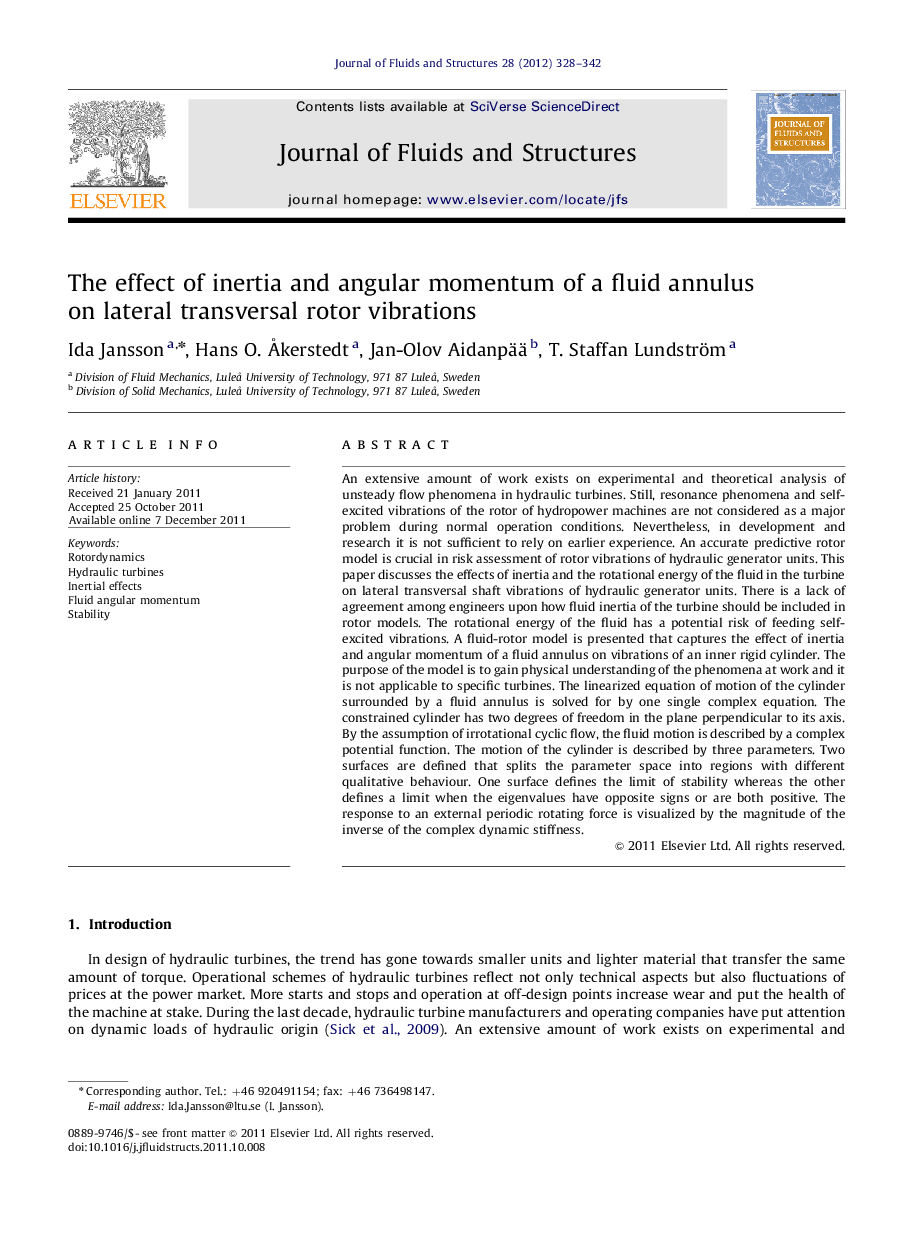| کد مقاله | کد نشریه | سال انتشار | مقاله انگلیسی | نسخه تمام متن |
|---|---|---|---|---|
| 797129 | 1466619 | 2012 | 15 صفحه PDF | دانلود رایگان |

An extensive amount of work exists on experimental and theoretical analysis of unsteady flow phenomena in hydraulic turbines. Still, resonance phenomena and self-excited vibrations of the rotor of hydropower machines are not considered as a major problem during normal operation conditions. Nevertheless, in development and research it is not sufficient to rely on earlier experience. An accurate predictive rotor model is crucial in risk assessment of rotor vibrations of hydraulic generator units. This paper discusses the effects of inertia and the rotational energy of the fluid in the turbine on lateral transversal shaft vibrations of hydraulic generator units. There is a lack of agreement among engineers upon how fluid inertia of the turbine should be included in rotor models. The rotational energy of the fluid has a potential risk of feeding self-excited vibrations. A fluid-rotor model is presented that captures the effect of inertia and angular momentum of a fluid annulus on vibrations of an inner rigid cylinder. The purpose of the model is to gain physical understanding of the phenomena at work and it is not applicable to specific turbines. The linearized equation of motion of the cylinder surrounded by a fluid annulus is solved for by one single complex equation. The constrained cylinder has two degrees of freedom in the plane perpendicular to its axis. By the assumption of irrotational cyclic flow, the fluid motion is described by a complex potential function. The motion of the cylinder is described by three parameters. Two surfaces are defined that splits the parameter space into regions with different qualitative behaviour. One surface defines the limit of stability whereas the other defines a limit when the eigenvalues have opposite signs or are both positive. The response to an external periodic rotating force is visualized by the magnitude of the inverse of the complex dynamic stiffness.
Journal: Journal of Fluids and Structures - Volume 28, January 2012, Pages 328–342